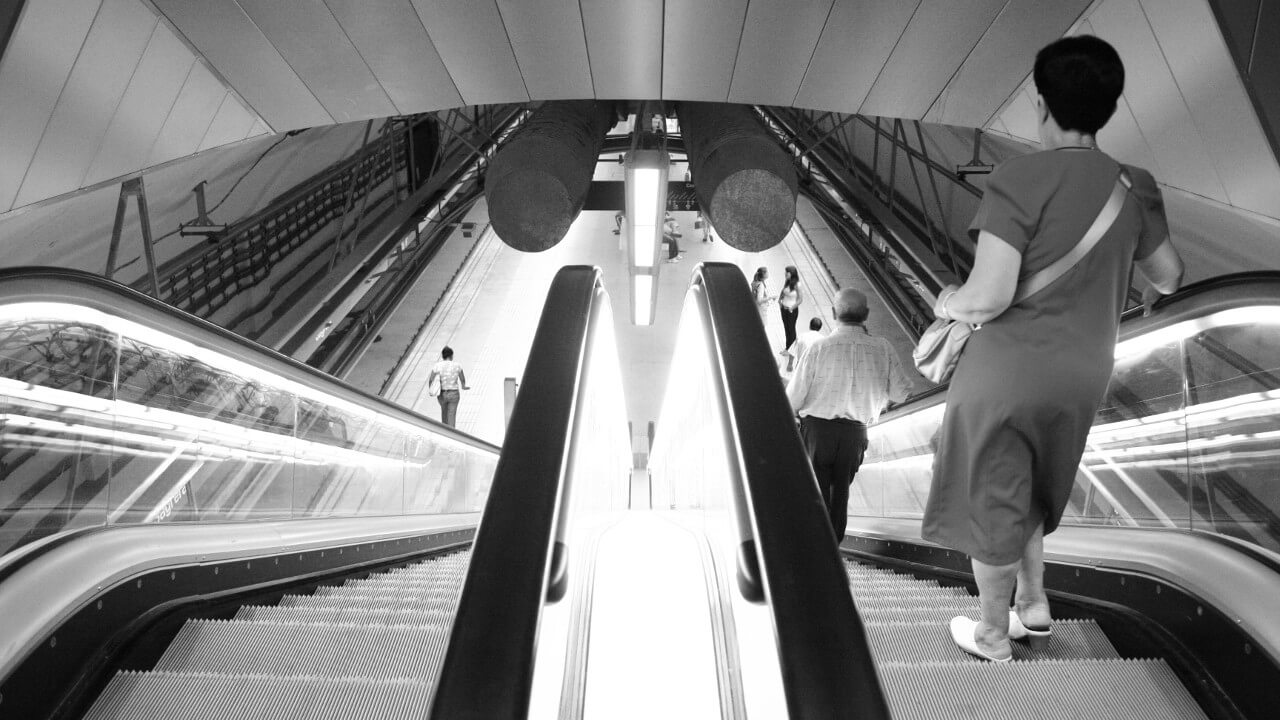Metro Barcelona – The route network
The metro in Barcelona is the second oldest metro system in the country after the metro in the Spanish capital Madrid. It was opened in 1924 with just a single line. Today, the metro network in Barcelona extends over a total length of 143.3 kilometers. The 12 lines serve 178 stations throughout the city. This enables over 450 million passengers to travel safely and comfortably from A to B every year.
Similar to Istanbul, the metro system is operated by two transport companies. While lines L1 to L5 and L9 to L11 are operated by “Transports Metropolitans de Barcelona” (TMB), lines L6 to L8 and L12 belong to the Catalan railroad company “Ferrocarrils de la Generalitat de Catalunya” (FGC). A typical feature of Barcelona’s metro is that the lines in the city center all run through tunnels. Outside the city center, on the other hand, most of the metro traffic is above ground. In Barcelona, the Metro Map includes the four streetcar lines T1 to T4 in addition to the metro lines preceded by an “L”. These can be clearly recognized by the capital letter “T”.
Barcelona’s metro lines at a glance
- L1 (Hospital de Bellvitge – Fondo)
- L2 (Parallel – Badalona Pompeu Fabra)
- L3 (Zona Universitària – Trinitat Nova)
- L4 (Trinitat Nova – La Pau)
- L5 (Cornellà Center – Vall d’Hebron)
- L6 (Plaça Catalunya – Sarrià)
- L7 (Plaça Catalunya – Avinguda Tibidabo)
- L8 (Plaça Espanya – Molí Nou – Ciutat Cooperativa)
- L9 (El-Prat Airport Terminal 1 – Zona Universitària)
- L10 (La Sagrera – Gorg)
- L11 (Trinitat Nova – Can Cuiàs)
- L12 (Sarrià – Reina Elisenda)
Information for tourists about the metro in Barcelona
More than almost any other European metropolis, Barcelona has developed into a real magnet for tourists in recent decades. This tourism boom is reflected in the tenfold increase in visitor numbers from 1990 to 2016, from 1.7 million to 17 million guests per year. As the number of visitors increases, so does the number of people who have to deal with the Metro Map in Barcelona.
After all, there is no other means of transport in the Catalan capital that allows you to reach sights such as the Sagrada Familia cathedral, Parc Güel or the Las Ramblas promenade more quickly and easily. However, guests in particular often ask themselves where they can buy metro tickets in Barcelona, how much they cost and which ticket will save them money.
Metro Barcelona – Tickets & Prices
While other world cities rely on complex ticket systems with fare zones, Barcelona has based its entire public transport system in the city on the principle of uniform pricing. This means that a journey on the subway is charged at a standard rate. And this is independent of the various operators of the subway lines.
This principle applies regardless of whether it is a short trip or a ride on the Barcelona Airport Metro from the outskirts of the city to the center. In addition, a valid ticket also entitles the holder to use the streetcar, the city bus lines and the FGC regional train in fare zone 1, which is the entire city area of Barcelona including the airport.
The classic one-way ticket for Barcelona’s metro is valid in each direction for 75 minutes after the first validation. The transport companies also offer ten-trip tickets and season tickets such as day passes and monthly passes. Those staying longer in Barcelona, on the other hand, can take advantage of more attractive offers. With the Hola BCN Card as well as the Barcelona Card, you can marvel at the countless cultural sights non-stop. Both tickets are available in several variants and entitle the holder to any number of journeys on the metro and other public transport throughout the city during the period of validity. The Barcelona Card also offers discounts such as free admission to 25 attractions and substantial discounts at 95 other establishments. A comprehensive accompanying booklet including the “Barcelona Metro Map” is also included. This makes orientation much easier.
The most important metro tickets in Barcelona
| Ticket | Prices | Buy tickets |
|---|---|---|
| Single ride | 2.20 Euro | available on-site |
| Airport ticket (one way) | 4.60 Euro | available on-site |
| "Hola BCN!" (48h) | 15.20 Euro | available on-site andonline erhältlich |
| "Hola BCN!" (72h) | 22.20 Euro | available on-site and online erhältlich |
| "Hola BCN!" (96h) | 28.80 Euro | available on-site and online erhältlich |
| "Hola BCN!" (120h) | 35.40 Euro | available on-site and online erhältlich |
Single, day and season tickets can be purchased at the ticket machines. They are located in Barcelona near the Metro Map at the entrances to the subway stations. Tickets are finally validated at the entrance to the platforms. Fare dodging is hardly possible any more, as modern ticket validators only allow access after stamping.
Most subway stations are already equipped with these new devices. To validate the cards, simply insert them into the slot provided. Incidentally, a ten-ticket can be validated several times in succession. This means it can be used by several people at the same time.
Metro timetable in Barcelona
From Mondays to Thursdays, Sundays and on public holidays, the metro in Barcelona runs between 5:00 and 24:00 with an average frequency of 5 to 7½ minutes. Only at peak times between 7:00 and 9:00 and between 17:00 and 20:00 is the waiting time between two trains reduced to 2½ minutes. Night owls also benefit from the fact that the metro timetable in Barcelona operates until 2:00 a.m. on Fridays and on the eve of public holidays.
To the timetables of Barcelona’s metro lines:
Exceptions are Saturdays and the nights of January 1, June 24, August 15 and September 24, when the metro operates 24 hours a day. Only during the week do night owls have to resort to either a cab or the 17 night bus routes after midnight. The latter run between 10 p.m. and 5.30 a.m. and also cover areas that cannot be reached by subway.
Further information on the Barcelona Metro
Not only are some of the buildings designed by Antoni Gaudi curious, but also the announcements on the Barcelona Metro. These are held in dialog form between two different speakers. While a male voice introduces the announcement with “Pròxima estació”, i.e. “next station”, a female voice then announces the name of the station. If available, the male voice starts again after the station announcement and provides information about transfer options.
The L3, L9 and L10 lines are currently being extended in order to keep up with the increasing number of passengers and the growth of the city. A special feature of these line sections will not only be the fully automatic operation, but also the use of double-deck tunnels with two track levels. In addition, the construction of an L13 line is being planned, which, like the L11, is intended as a short feeder to the L1 and L2 lines.






